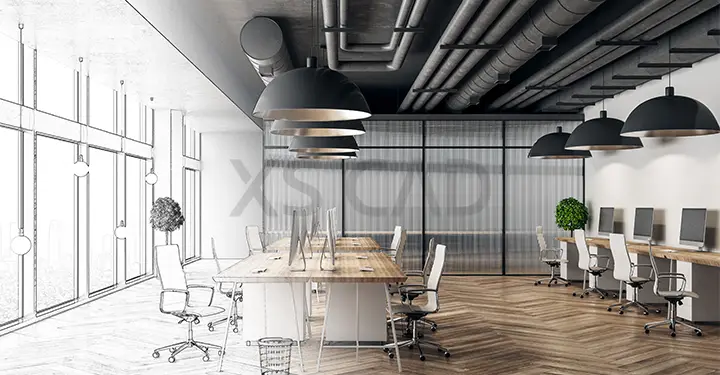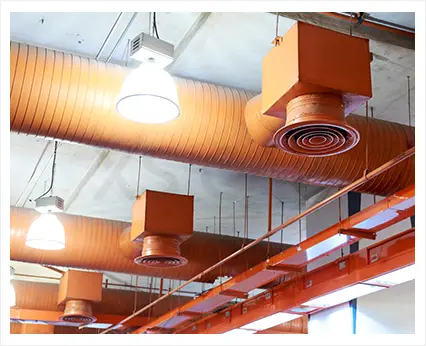Our Articles

Integrating Renewable Energy Sources into MEP Systems for Commercial Buildings
Accounting for approximately 39 percent of global carbon dioxide emission and 22 percent of operation emissions, according to the World Green Building Council, the construction industry needs to consider how it can modify construction practices to meet tomorrow’s future. Contributing to 35 percent of global energy consumption and with increasing populations, businesses, building commercial, educational, healthcare and other related institutions, the construction industry must explore green energy sources, sustainable practices and sustainability design.
Several experts in engineering services will be required to design sustainable systems, for energy modelling, analysing potential EEMs (energy and environmental materials), thermal load calculations, duct design for HVAC systems and finding renewable energy solutions.
So, what do we mean by sustainable MEP construction or building green?
Sustainability involves three interconnected aspects: environmental impact, economic impact and social impact.
Environmental Impact
Looking at just the environmental impact, this deals with what materials are used, how they perform over time and the potential for using renewable energy in the design and build process. When sustainability goals stress minimising adverse environmental effects, cities and communities will demand clean, affordable energy options.
Certain new forms of energy that are being developed can be integrated into buildings. It is even possible for large buildings to become ‘energy positive’ – pushing energy generated from solar power or wind into the grid, rather than relying on the grid for their power needs. Also, older buildings still reliant on fossil fuels can use sensors so that lighting and air conditioning systems minimise energy consumption.

Economic Impact
The second aspect of green building, economic impact, involves leaning towards a circular economy of renewable energy, waste and water. This would include reusing a building’s water harvesting and recycling as many building materials as possible. Utilising natural ventilation and heat recovery systems can significantly reduce the impact of construction in the world.
As climate change remains a looming threat, conventional MEP designs and green buildings must fulfil international standards, including energy-efficient retrofitting of existing buildings and large solar PV installations. Sustainability does not only consider initial costs, but balances individual interests while safeguarding the needs of the planet.
MEP Strategies
As for mechanical or heating, ventilation and cooling (HVAC) techniques, the priority is to combine active air conditioning systems – vital for human comfort – with passive systems, such as natural ventilation and thermal mass, to moderate thermal conditions. It is important to avoid or minimise refrigeration systems with the potential for ozone depletion and global warming.
How can this be done?
Windows must be oriented to avoid excessive heat gain from the sun. Also, buildings can strive for a heat transfer coefficient 40 percent lower than required and use a solar heating and hot water system. These measures can result in a near-zero energy building.
The right design, mechanical 3D modelling services and HVAC heat load calculations can contribute considerably to reduced electricity consumption. Public health engineering experts can coordinate with architects and structural engineers to create sustainable plumbing solutions and plumbing system design.
Further, by installing the right water treatment system, fresh water use can be reduced by 75 percent.
Photovoltaics
Depending on the panel and installation site, photovoltaics can generate as much energy as was used in their production within five to 25 months.
The quality of solar panel production, design and longevity will influence their sustainability. For instance,
Robust, long-lasting and rarely needing repair, solar panels hardly ever create problems. If they do occur, repair is usually possible. In case electrical cables become porous or junction box diodes fail, they can typically be easily replaced.
Knowledge & Expertise
To create these designs and achieve these sustainability goals, it is necessary to have in-house specialists with accreditations that support sustainable development (LEED AP, WELL AP, CEM, CEA, CMVP, M.Sc.), energy and solar PV specialists. In addition, a motivated and expert design team must be able to handle a variety of modeling software. International standards to follow include quality management (ISO 9001), occupational health and safety management (ISO 45001), environment management (ISO 14001), and energy management (ISO 50001).
To know more about MEP systems for commercial buildings . . .
A team that involves professionals with expertise in solar PV systems can minimise dependence on fossil fuels. The active participation of certified solar energy experts and solar roof installation at large facilities, such as warehouses and commercial buildings, can help bolster the move towards a construction sector that puts renewable energy at the forefront. For sustainability to be the new normal, sustainability design must be integrated into MEP systems in commercial and other types of buildings.
XS CAD has valuable experience providing mechanical 3D modelling services, sustainability design and other BIM services for general contractors and consultants. Our range of services for consultants and across the world include thermal load calculations, HVAC heat load calculations, duct design for HVAC systems, plumbing system design, mechanical engineering plumbing design and fire protection system design, creating models and drawings by using Revit BIM, AutoCAD and BIM Collaborate Pro for cloud collaboration.

